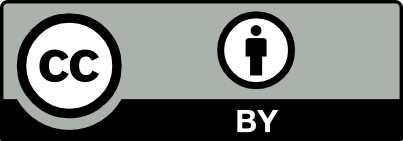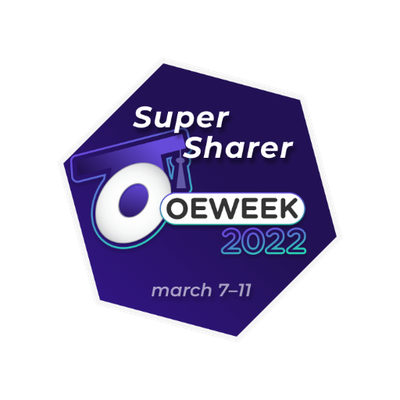Daily Highlights
On the 1st day, I’ve participated in a large event for federal public servants in which Open Learning came through several ways. From this experience, I realize that “Learning & Development” in the public service is about making it possible for everyone to contribute to meaningful learning experiences. A neat example from that crowd, which we could leverage in the college network: GCshare – Public Service Open Educational Resource Library (ecampusontario.ca).
As mentioned, I posted my trends summary on the 2nd day. At the same time, I remarked on both hopefulness and vigilance as the conversation moves from affordability of educational materials to shifts in the ways we learn and teach. For instance, Brenda Smith brought up the movement’s impact on re-engaging with pedagogy.
Meaning that people collaborate individually across institutional boundaries. It went well with the “smallness” trend, as meaningful action might not sound like much, in the abstract.
It’s also about “going glocal”, as a global movement embedded locally.
For instance, Francophone university professors in Montreal and Toronto drew inspiration from one another, beyond institutional barriers.
One of our tasks, as members of this global movement, is to inject blood in the interpersonal network which brings us all together.
Replying to these comments, Paul Stacey (OE Global’s current Executive Director) shared:
For me this resonated with conversations we’ve been having at OEGlobal around how “openness” is a way of being. A verb not a noun.
Which itself connected with comments made by Josie Gray (BCcampus manager, Production & Publishing) during our Open Education Symposium panel to the effect that we should be wary of imposing openness on others, especially in the context of ongoing marginalization in academia and Higher Education.
Localization was my focus for the fourth day: adapting material so that it properly fits a different local context from the original.
This theme initially came from an experience at uOttawa in adapting a translation textbook from Canadian English to Canadian French. During an OER showcase organized by fabriqueREL and uOttawa, professor Lynne Bowker pointed to important aspects of the decision-making process in her project. Collaborating with a French-speaking alumna from her translation program, Bowker decided to translate a Canadian English idiom into a French Canadian one.
Which meant that the book’s concluding remarks:
It’s not a comprehensive guide, but it’s enough to get you started, so put your runners on and get going!
Ce n’est pas un guide complet, mais c’est suffisant pour vous aider à démarrer, alors attachez bien votre tuque et partez courir le monde!
Bowker chose the term “runners” as a Canadian equivalent to “sneakers”, “trainers”, or “running shoes” in other English-speaking contexts. Her colleague’s use of a Québécois idiom made that remark contextually relevant. Neutral formulations could convey the meaning of either idiom. The guide itself was explicitly designed as a Canadian alternative to those coming from the UK or the US.
While this may sound trivial, the very process of adaptating a resource between social contexts has a deep impact in the opening work mentioned by Stacey. Perhaps as much so as selecting an open license for the content itself.
The notion is that a learning resource is more effective when it’s appropriate in specific contexts. Generic resources provide little value compared to local ones. Yet it may be difficult to adapt resources between contexts. What Bowker demonstrated was the inner workings of this adaptation process.
There’s a lot of content out there. Especially in English. We need to make it relevant to our contexts.
While I made several other comments on that Thursday, I’ll skip ahead to my main takeaway from the last day of OEWeek: learning professionals are already leveraging Open Educational Resources (OERs), whether or not they know anything about OERs. This realization came from interactions during Eductive’s first lunch and learn (or is “brownbag lecture”?). Camille Arpin facilitated this session with me. Based on unwitting use of OERs, I misquoted Molière. François Lizotte corrected me. (Both Camille and François have taught French literature.)
In English, the quote would be:
My faith! For more than forty years I have been speaking prose while knowing nothing of it, and I am the most obliged person in the world to you for telling me so.



